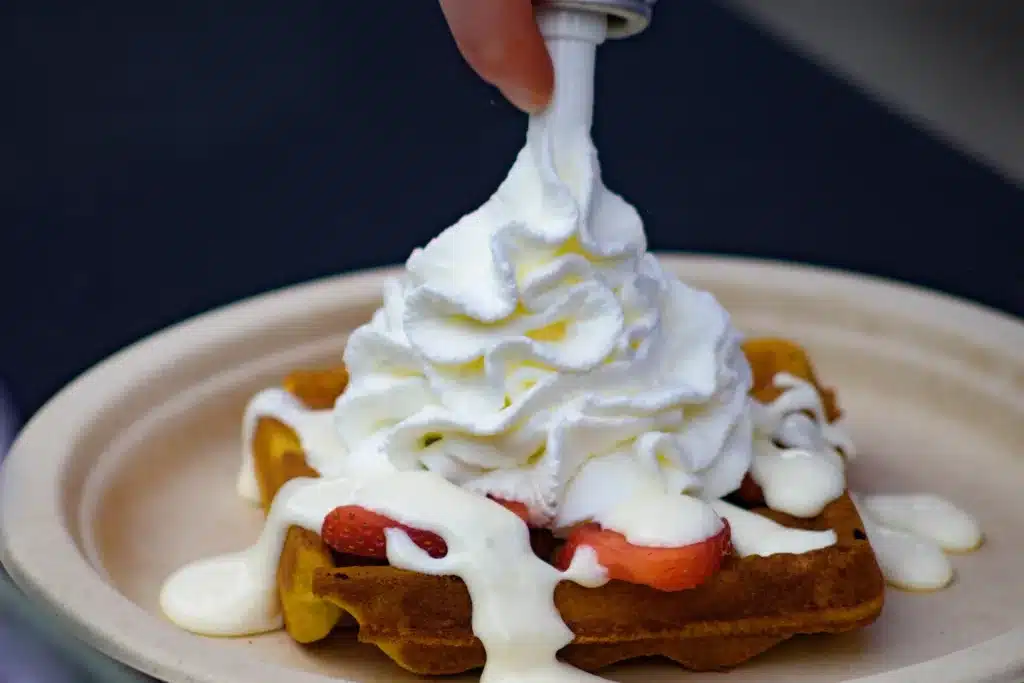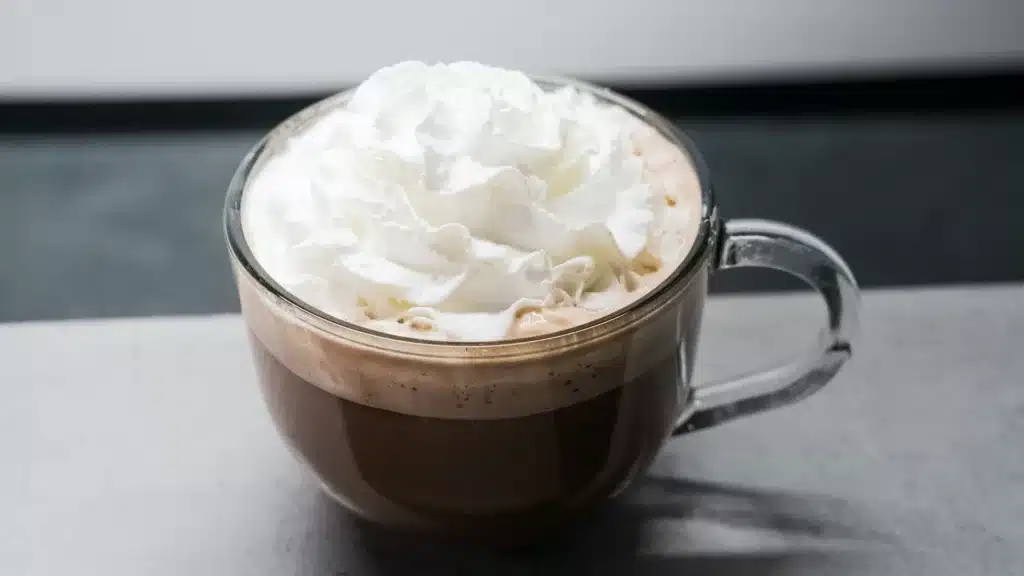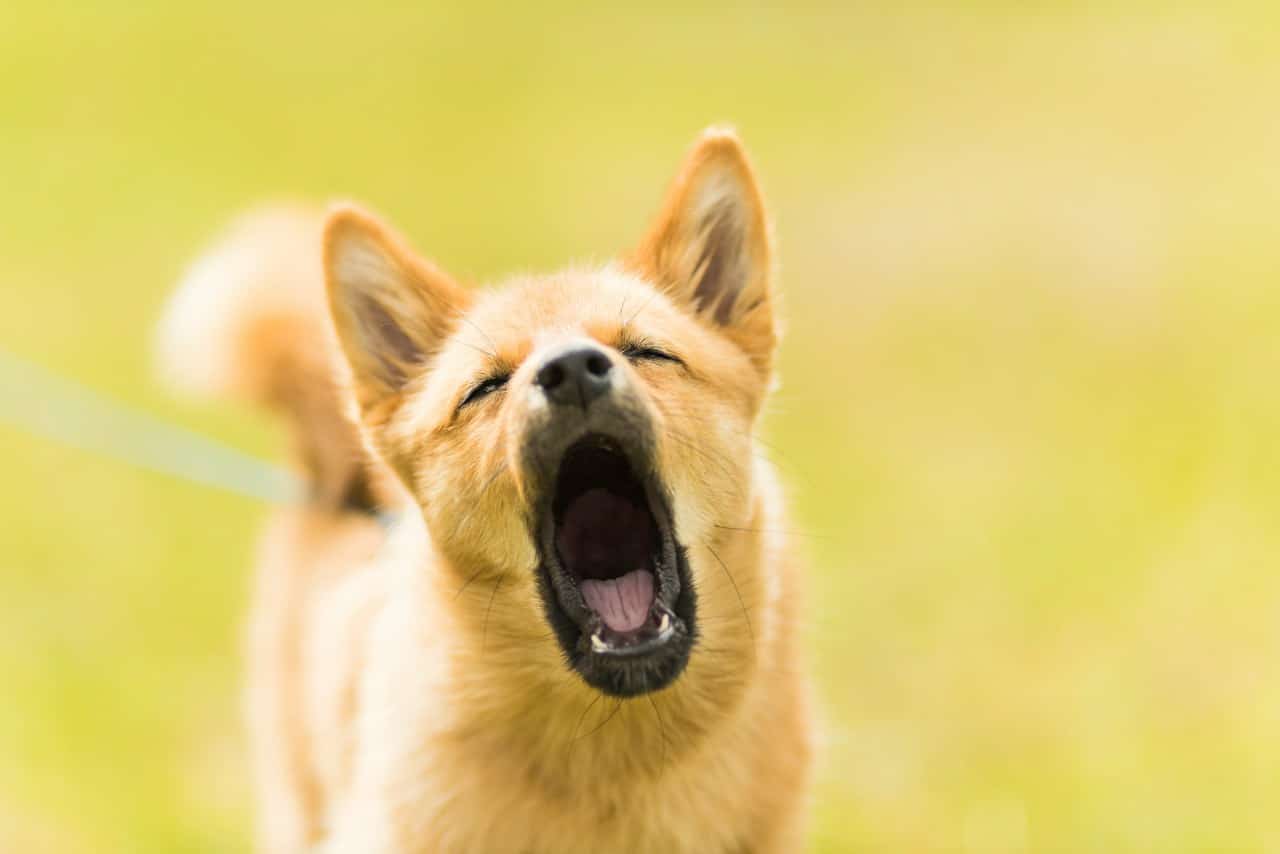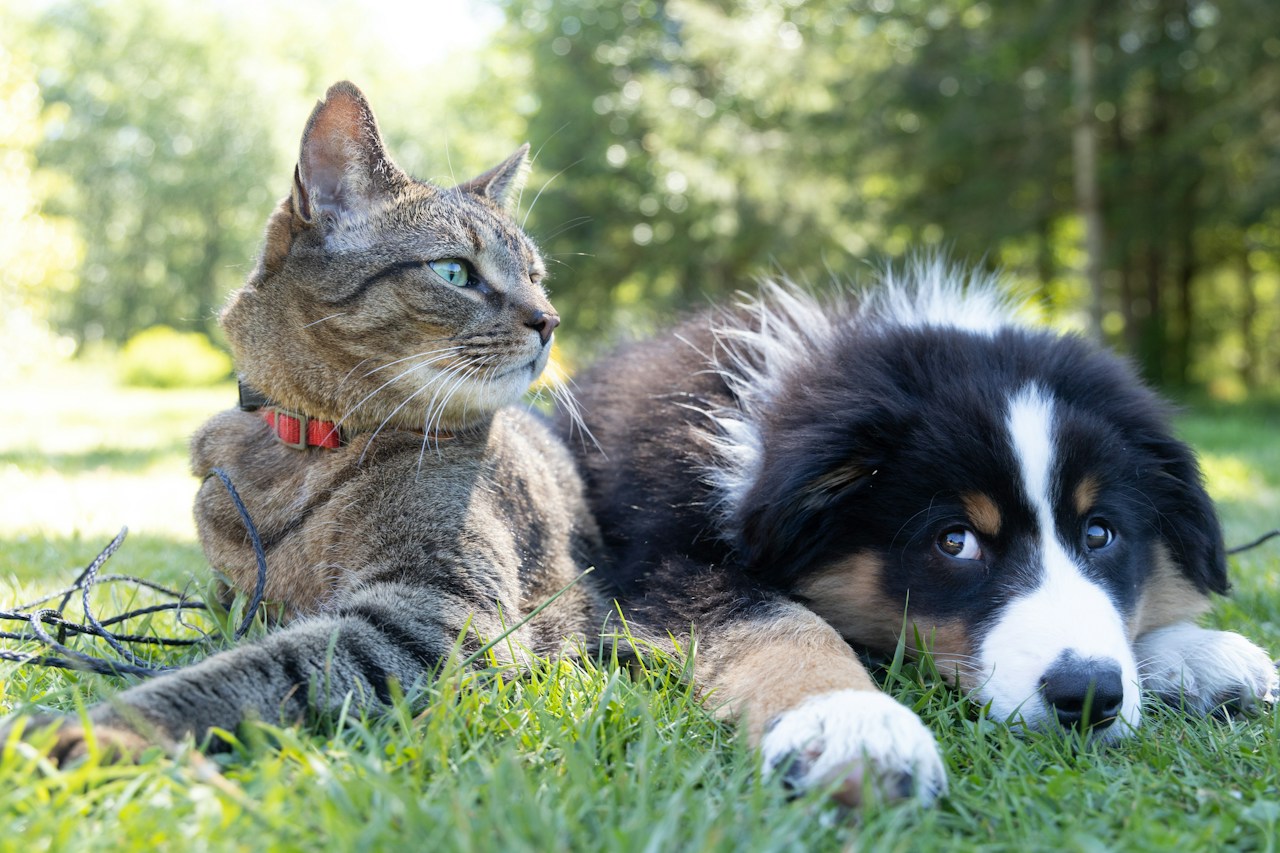Cats are curious creatures that often catch our attention with their playful antics and adorable purrs. As pet owners, it’s natural for us to wonder about what foods are safe for our furry friends to enjoy. So: Can Cats Have Whipped Cream?
Today, we’re going to explore a popular treat that many people love: whipped cream. But can cats have whipped cream? Let’s find out!
Table of Contents

What is Whipped Cream?
Whipped cream is a delicious and fluffy topping that is created by whipping heavy cream. Heavy cream, also known as whipping cream, is a rich dairy product that contains a high percentage of milk fat. When the cream is whipped vigorously, it incorporates air and transforms into a light and airy texture.
To make whipped cream, you typically start with cold heavy cream and use a whisk or an electric mixer to beat it until it thickens. As you continue whisking, the cream will begin to expand and form soft peaks. At this stage, you can add a sweetener like sugar or vanilla extract to enhance the flavor. The process of whipping incorporates air bubbles into the cream, giving it its fluffy and creamy texture.
Whipped cream is a versatile topping that is commonly used to add a touch of sweetness and creaminess to various desserts. It is often seen adorning desserts like pies, cakes, ice cream sundaes, hot cocoa, and even fresh fruits. Its light and airy texture and subtle sweetness make it a favorite treat for many people.
However, when it comes to cats, it’s important to consider their specific dietary needs and digestive systems before offering them whipped cream.

The Digestive System of Cats:
The digestive system of cats is specialized for processing a diet that consists mainly of meat. Cats are considered obligate carnivores, which means their bodies are designed to derive essential nutrients from animal tissues.
Let’s take a closer look at the different parts of a cat’s digestive system:
- Mouth: Cats have sharp teeth and a strong jaw that helps them tear and chew their food. They use their teeth to break down meat into smaller pieces before swallowing.
- Esophagus: The esophagus is a muscular tube that connects the mouth to the stomach. It helps move the food from the mouth to the stomach through peristaltic contractions, which are rhythmic muscle movements.
- Stomach: The stomach is a vital organ where food gets further broken down and mixed with stomach acids and enzymes. These acids help break down proteins, which are the main component of meat.
- Small Intestine: After leaving the stomach, the partially digested food enters the small intestine. The part of the digestive system you are referring to is the small intestine. The small intestine handles further breaking down food and absorbing nutrients into the bloodstream. It receives digestive enzymes from the pancreas and bile from the liver to aid in the digestion and absorption process.
- Large Intestine: The large intestine is responsible for absorbing water and electrolytes from the remaining undigested food. It also plays a role in forming and eliminating feces.
- Rectum: The rectum is the final part of the digestive system. It stores feces until it is ready to be expelled from the body during a bowel movement.
It’s good to know that cats have special needs when it comes to their food. They have a different kind of tummy than us humans, and they need certain things to stay healthy.
Cats are really good at digesting animal protein. Their bodies are made to get important things like nutrients from it. But there are some foods that cats can’t digest as well as we can.
That’s why it’s important for us to understand how their tummies work. When we know how their digestion system works, we can make smarter choices about what foods are good and safe for them to eat.
So, when it comes to feeding cats, we have to think about what they need and what their bodies are made for. It’s like giving them the right fuel to keep them healthy and happy.
Can Cats Have Whipped Cream?
The answer is a bit tricky. While cats may find the taste of whipped cream appealing, it’s not a good idea to give it to them regularly or in large quantities. Whipped cream is high in fat and sugar, which can lead to digestive issues in cats.
Cats lack the necessary enzymes to break down lactose, a sugar found in dairy products like whipped cream. Consuming dairy products can result in stomach upset, diarrhea, or even vomiting.

Moderation is Key:
When it comes to treating our feline friends, moderation is key. This means that we should be mindful of the amount and frequency of treats we give to our cats. Whether it’s whipped cream or any other type of treat, it’s important to keep their overall health and well-being in mind.
Here’s why moderation is essential:
- Balanced Diet: Cats have specific dietary requirements to stay healthy. Their main source of nutrition should come from a balanced cat food that is formulated to meet their needs. Treats, including whipped cream, should not replace their regular meals. Overindulging in treats can lead to an unbalanced diet, lacking the essential nutrients that cats require.
- Weight Management: Just like humans, cats can become overweight or obese if they consume excessive calories. Treats, especially those high in fat and sugar like whipped cream, can contribute to weight gain. Obesity in cats can lead to various health problems such as diabetes, joint issues, and heart disease. It’s important to monitor their weight and ensure they maintain a healthy body condition.
- Digestive Sensitivity: Cats have sensitive digestive systems that may not tolerate certain foods well. Whipped cream, being high in fat and containing lactose, can potentially cause digestive upset such as diarrhea or vomiting if consumed in large quantities. Moderation helps minimize the risk of digestive issues and keeps your cat’s tummy happy.
- Training and Bonding: Treats are often used as a reward during training sessions or as a way to strengthen the bond between you and your cat. By using treats in moderation, you can still provide positive reinforcement and show affection to your cat without overindulging them.
Remember, the primary focus should be on providing your cat with a nutritionally balanced diet and ensuring their overall well-being. Treats should be given sparingly and in small amounts. If you’re unsure about the suitability of a specific treatment, it’s always best to consult with your veterinarian to ensure the safety and health of your furry friend.
By practicing moderation and making informed choices, you can ensure that your cat stays healthy and happy and receives the occasional treat as a special reward.
Healthy Treat Alternatives:
Instead of whipped cream, there are plenty of other treats you can offer your cat that is safe and healthy. Cats love meat, so you can consider small pieces of cooked chicken or fish as a special treat. There are also specially formulated cat treats available in pet stores that are designed to meet their dietary needs.
Remember, Water is Best:
The most important thing you can provide for your cat is fresh, clean water. Cats need to stay hydrated, so make sure they always have access to a bowl of water. Water is the best beverage for cats and will help keep them healthy and happy.
Conclusion: Can cats eat whipped cream?
While whipped cream may seem tempting to share with your cat, it’s best to avoid giving it to them. Cats have specific dietary requirements, and their digestive systems are not equipped to handle foods like whipped cream.
Remember, moderation is key when it comes to treating your feline friend. Stick to healthy alternatives and always prioritize their well-being. And most importantly, shower them with love and attention—they’ll appreciate it more than any treat!
Source: What is whipped cream?
Related Posts
Can cats eat pork? Is pork safe for cats?


